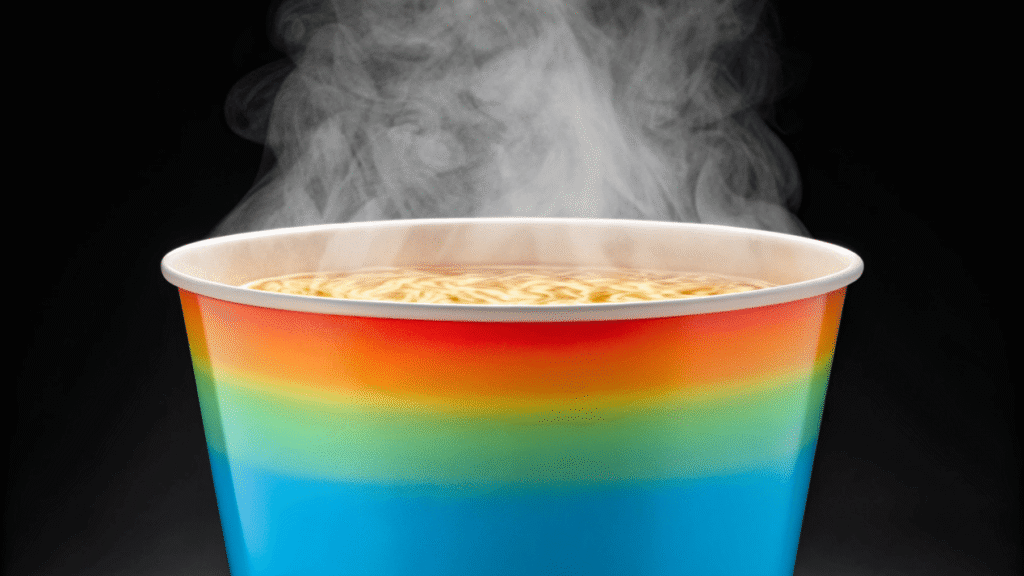Your customer pours boiling water into your noodle bowl. They worry it might leak, get soft, or worse, burn them. It is a moment of trust.
A noodle bowl is engineered using special high-density paperboard, heat-activated glues, and a stable PE coating. Rigorous quality testing, including a hot water hold test, then verifies its safety and performance.
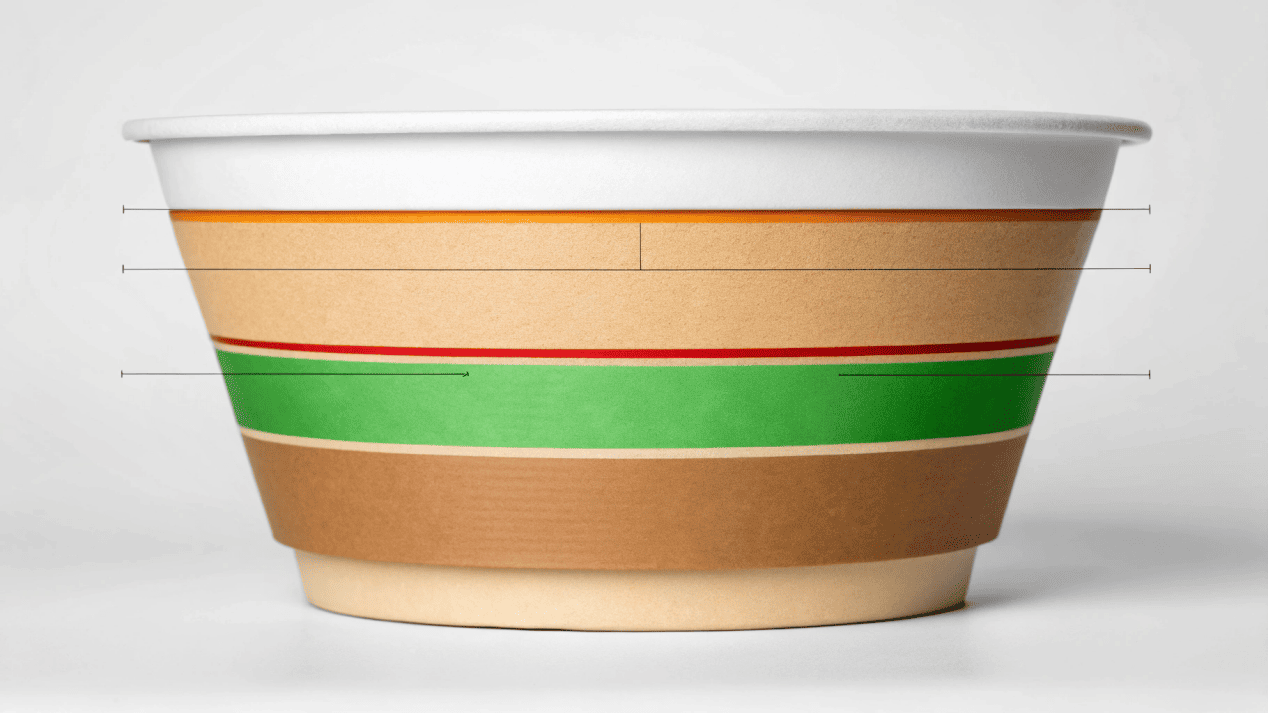
It is one of the most popular meals in the world. Add boiling water, wait three minutes, and enjoy. But as an engineer, I know the true magic is in the bowl that makes it all possible. An instant noodle bowl must solve some big challenges. It must handle extreme heat while also being a powerful branding tool for your company. Let’s pull back the curtain on the science that makes a perfect noodle bowl.
How Does the Bowl Stay Strong with So Much Heat?
You imagine a paper bowl in a microwave. You worry it will deform, catch fire, or simply fall apart, causing a huge mess and a very dangerous situation.
The bowl uses special heat-tolerant, high-density paperboard. More importantly, the glues used for the seams and base are heat-activated. This means heat actually strengthens the seal, making it incredibly strong and safe.

The main job of a noodle bowl is to handle extreme heat safely. This is a non-negotiable safety feature, and it starts with the materials we select.
The Foundation Material
It all begins with the right paper. We use a specialized, high-density, multi-ply virgin wood pulp paperboard. We choose this material for its superior strength and natural heat tolerance. Its structure is designed to stay rigid even when holding boiling water. It also has insulating properties, which helps keep the outside of the bowl cool enough to touch safely.
The No-Fail Construction
This is where the real engineering comes in. Unlike a cup for a cold drink, every part of a noodle bowl is built for what we call "thermal stress." The glues we use to seal the side seam and the bottom of the bowl are special. They are formulated to be heat-activated. This means that when you add boiling water, the heat actually makes the seals stronger and more secure. The bowl will not deform or leak. This is the single most important safety feature of the entire product.
What Stops the Hot, Oily Soup from Making the Bowl Soggy?
You picture hot soup sitting in a paper bowl for minutes. You expect the paper to get soft and soggy, changing the taste of the noodles and risking a collapse.
A thin, uniform layer of food-safe Polyethylene (PE) coating acts as a waterproof barrier. It is laminated to the paper and is completely stable, so it will not peel when exposed to hot water, oil, or salt.
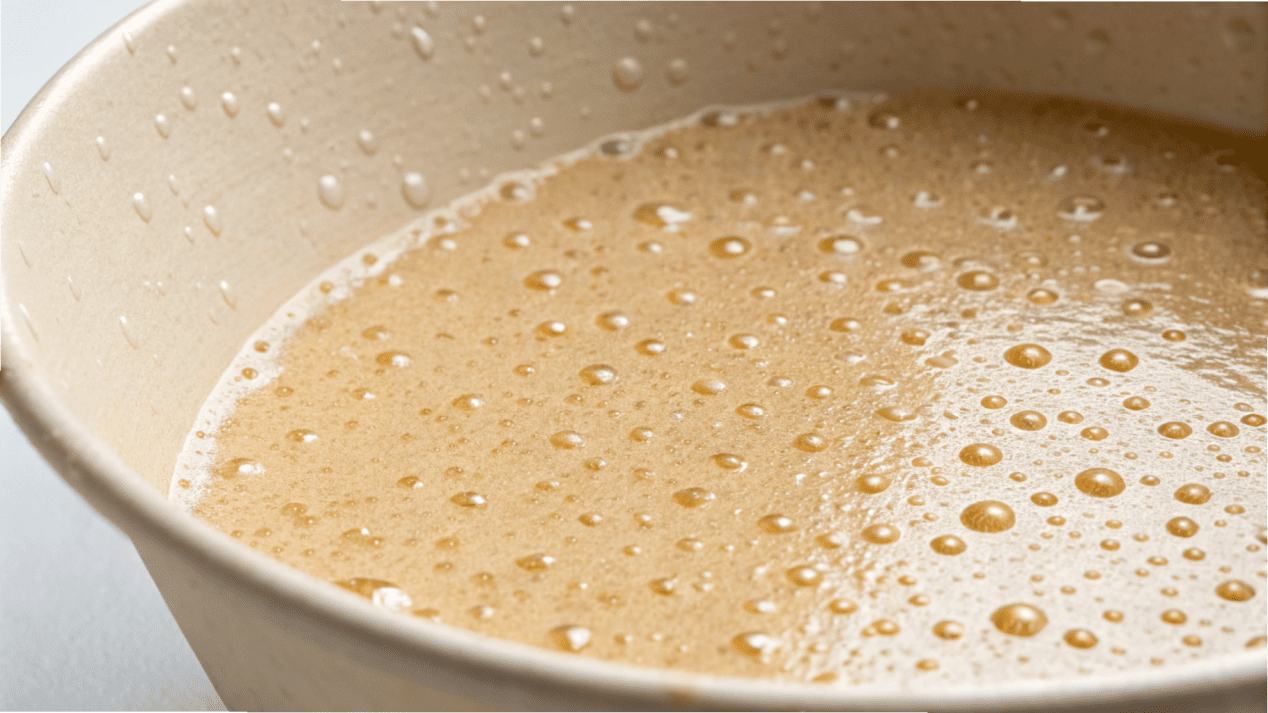
The thin plastic lining on the inside of the bowl is the unsung hero. It is the only thing that stands between a hot, delicious meal and a hot, soupy mess. Its stability is something we take very seriously.
The Science of the Coating
We use a high-grade, food-safe Polyethylene (PE) coating. This thin layer is applied to the paperboard using a precision lamination process. This process ensures that the coating is completely uniform and seamless. We have quality checks to make sure there are absolutely no pinholes or imperfections in this barrier.
Performance Under Pressure
This coating does more than just make the paper waterproof. We engineer it to be completely "inert" and stable. This means it will not react to any of the ingredients in the soup. It will not peel, bubble, or break down when it is exposed to the hot oils, salts, and boiling water in your product for an extended period. This guarantees two things. First, nothing will interfere with the authentic flavor of your noodles. Second, the bowl will not become soggy and weak.
How Can You Print Complex, Colorful Designs on a Noodle Bowl?
You have a beautiful, colorful brand design for your noodle bowl. But you are worried it will look faded or blurry on the final product, cheapening your brand's image.
We use high-speed Flexographic printing presses. This technology allows for crisp details and precise color. We only use water-based, food-grade inks that are 100% safe, odorless, and can perfectly match your brand colors.
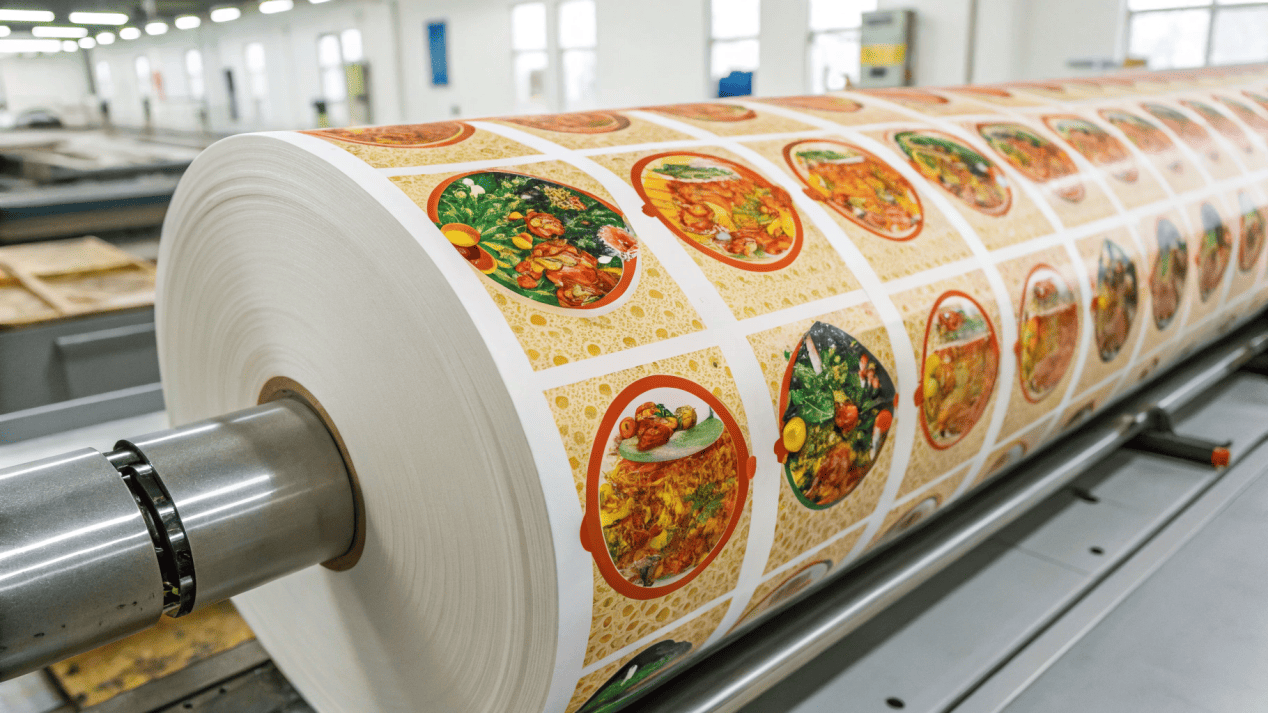
In a crowded supermarket aisle, your bowl's design is your best salesperson. It has to grab the customer's attention and communicate quality.
| Printing Aspect | Our Solution | Benefit to Your Brand |
|---|---|---|
| Vibrant Color | High-speed Flexographic printing | Makes complex illustrations and logos "pop" with clarity and energy. |
| Brand Consistency | Pantone color matching system | Your specific brand colors will be perfectly consistent across every single bowl. |
| Food Safety | Water-based, low-migration inks | The inks are completely odorless and tasteless, ensuring a pure food experience. |
I always remind my clients that their brand's image must be safe to consume. We exclusively use water-based, food-grade inks. These inks have no smell and no taste. We make sure that the only thing your customer experiences is the delicious flavor of your noodles. We can match any official Pantone color to ensure your brand always looks exactly the way it should.
How Do You Know Every Single Bowl is Safe and Leak-Proof?
You have approved the design and placed a huge order. But you have a nagging fear that a small percentage of the bowls might have defects, leading to customer complaints.
We conduct a series of rigorous tests on every batch. This includes a lid-fit test for a perfect seal and a hot liquid hold test where we fill bowls with boiling water.
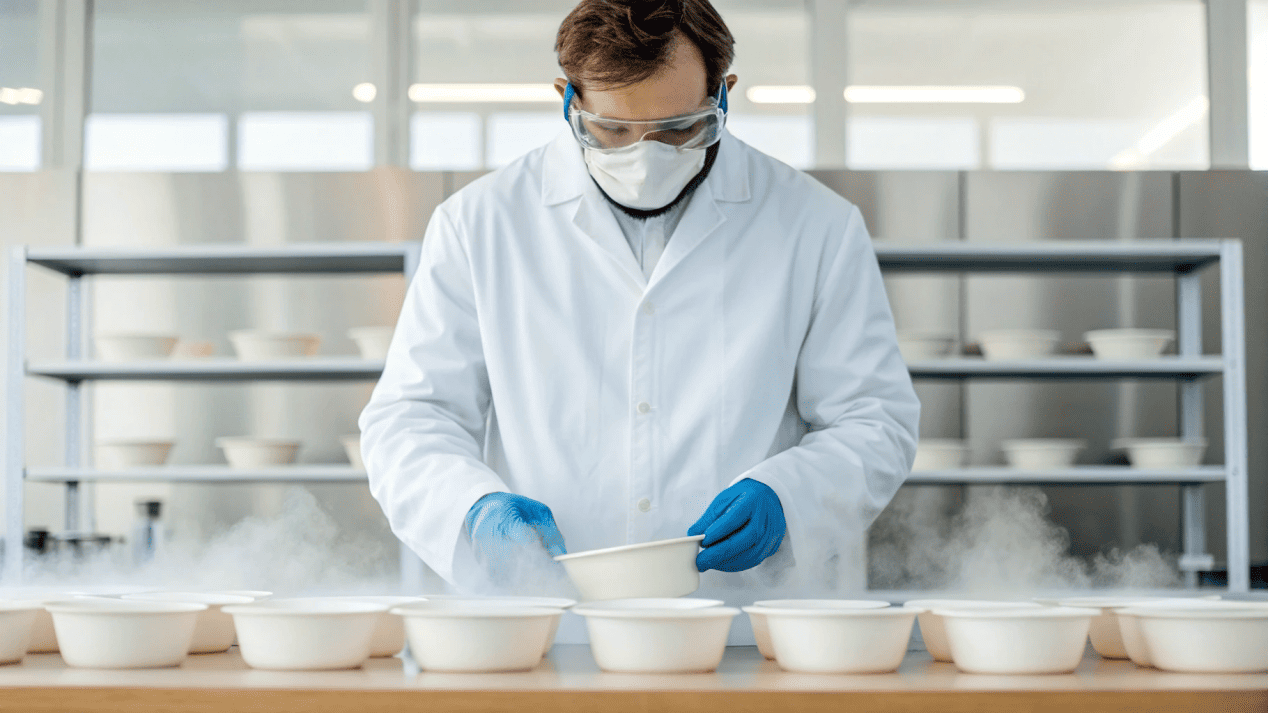
Before any bowl leaves my factory, it has to pass a series of tests that simulate the real world. A noodle bowl is a promise of a safe meal, and we test to make sure we keep that promise.
The Lid-Fit Test
The rolled rim at the top of the bowl is engineered to very precise dimensions. We conduct tests to make sure that the lid, whether it is a paper lid or a foil seal, creates a perfect, airtight seal every time. This is critical for keeping the product fresh on the shelf and preventing spills.
The Hot Liquid Hold Test
This is the ultimate test. We take samples from every production run and fill them with boiling water. We then let them stand for an extended period of time, longer than a customer ever would. We watch for any sign of leakage at the seams, any weakness in the structure, or any softening of the paper.
Constant Quality Control
Our factory is ISO certified. This means we have quality checks at every single stage of production. We use automated optical cameras to inspect the bowls, and our team also performs regular manual checks from the raw paper to the final packed box.
Conclusion
A noodle bowl is an engineered promise of a hot, safe meal. We build that promise into every single bowl through science, technology, and rigorous testing.
